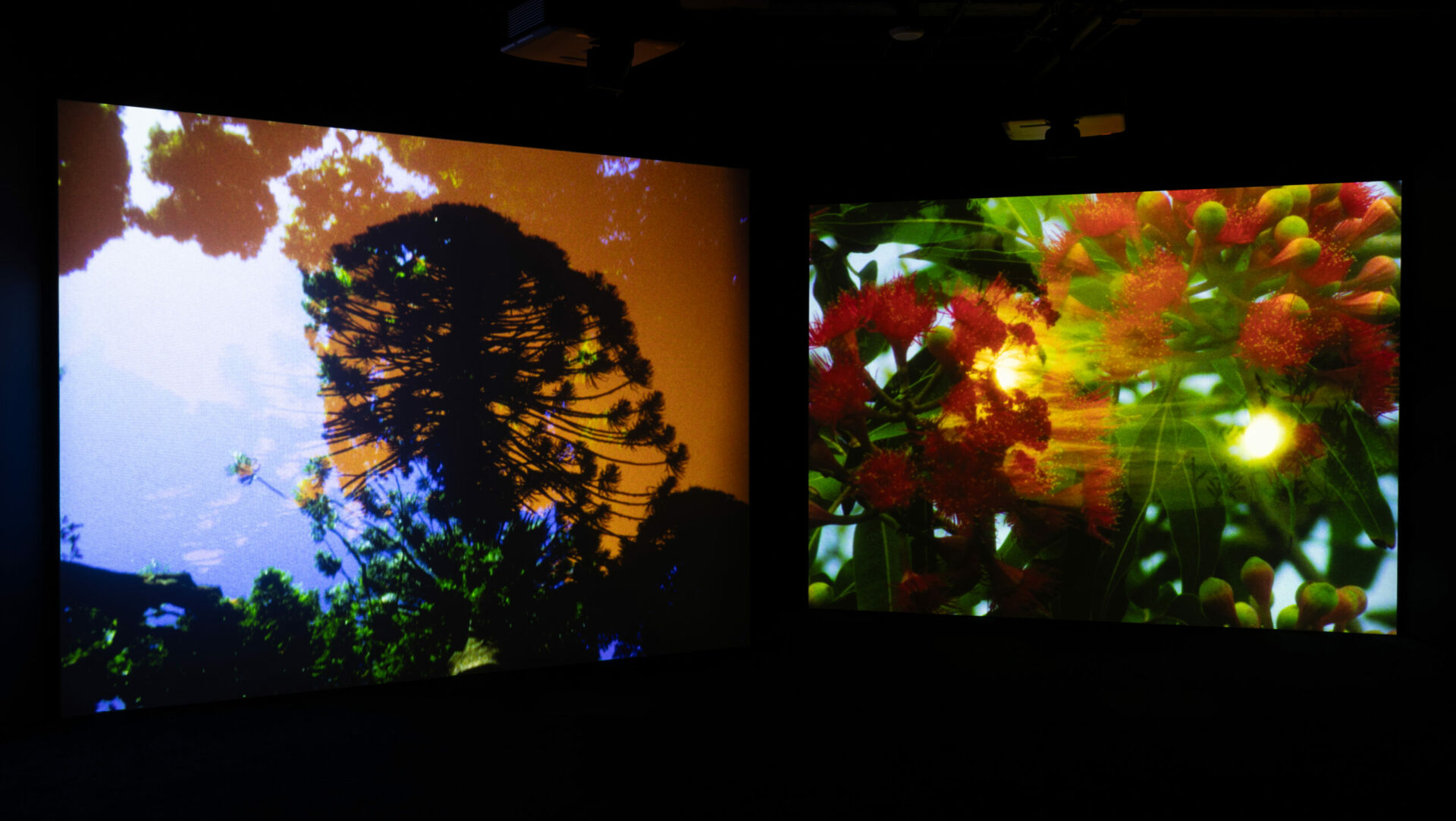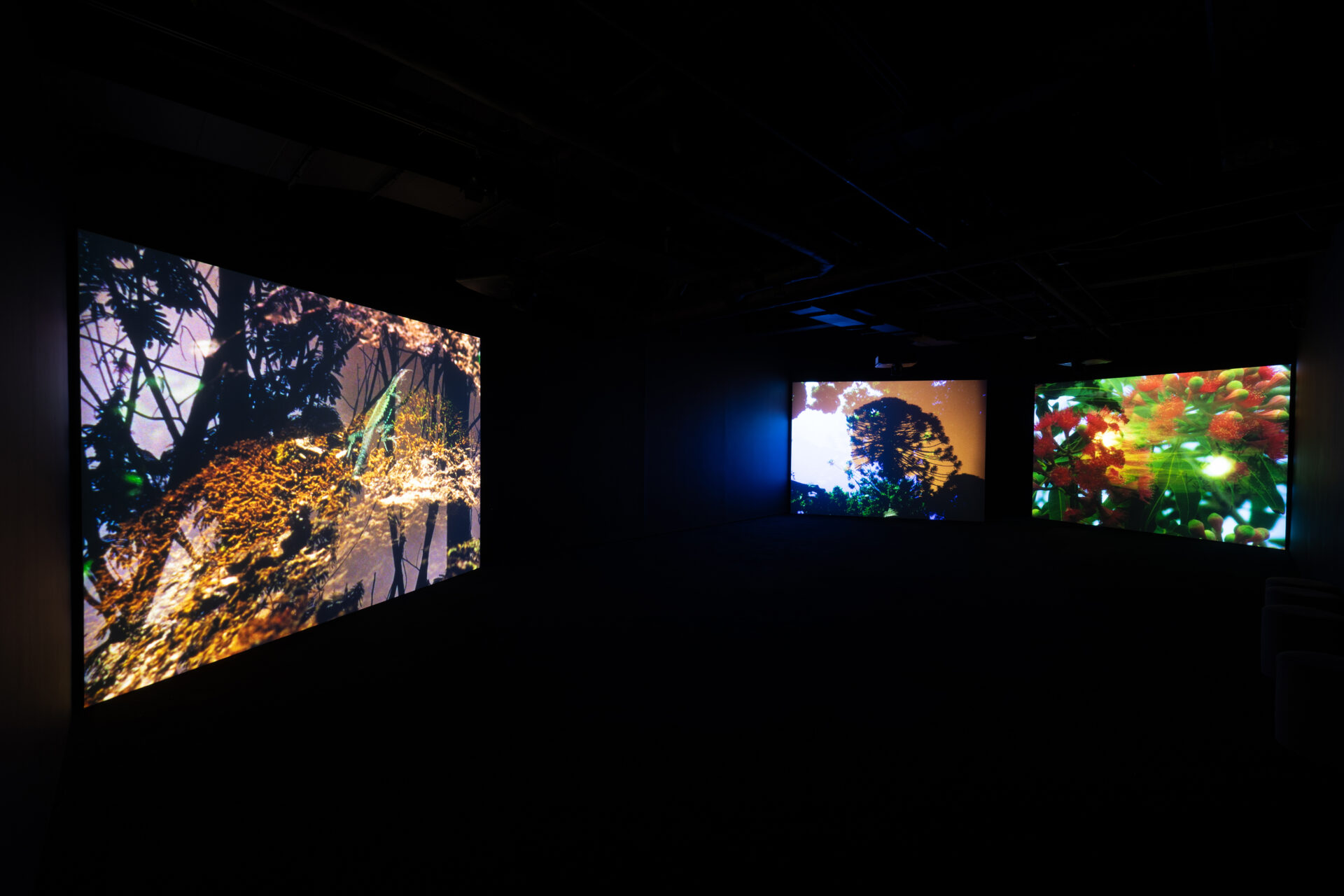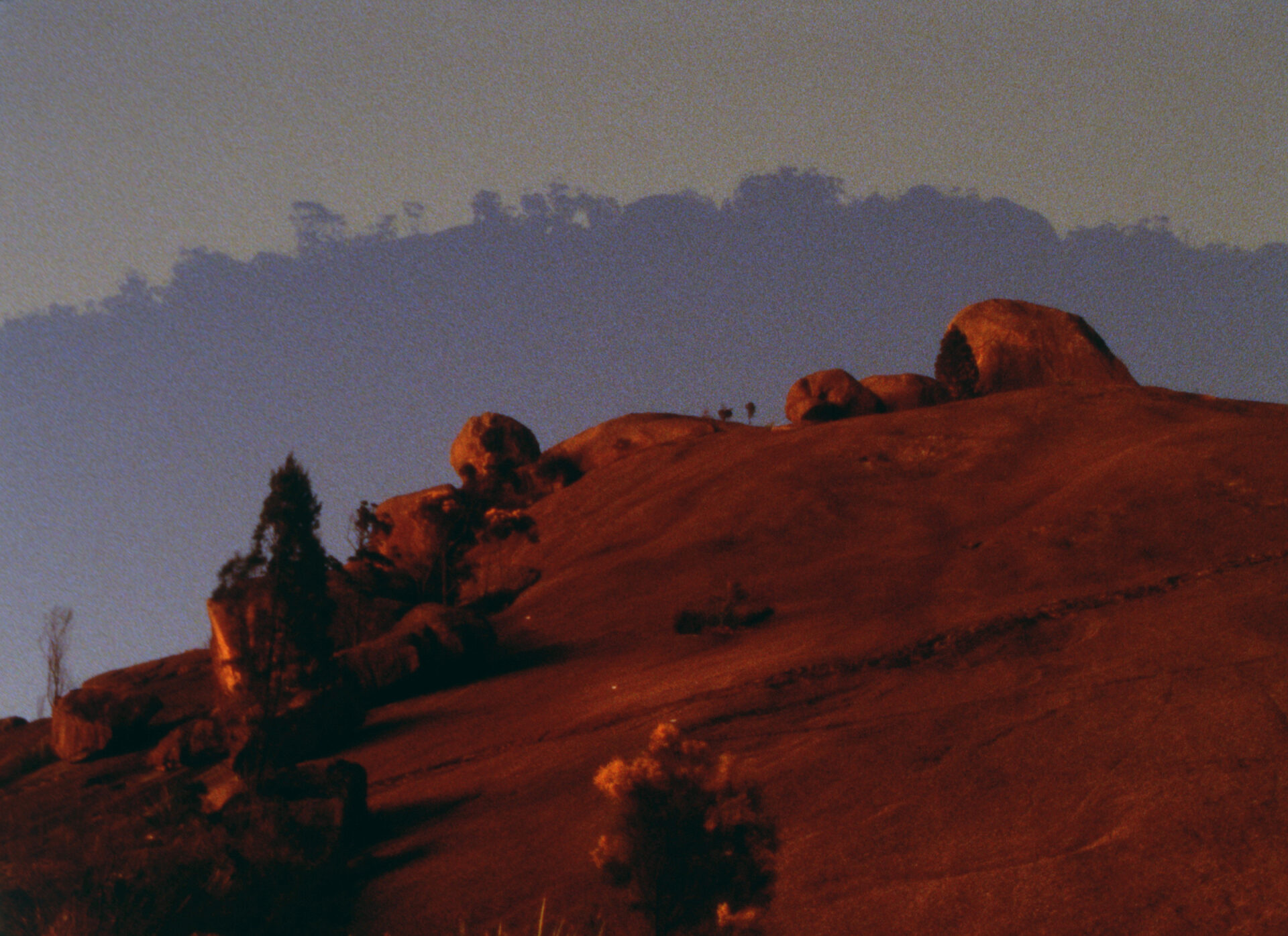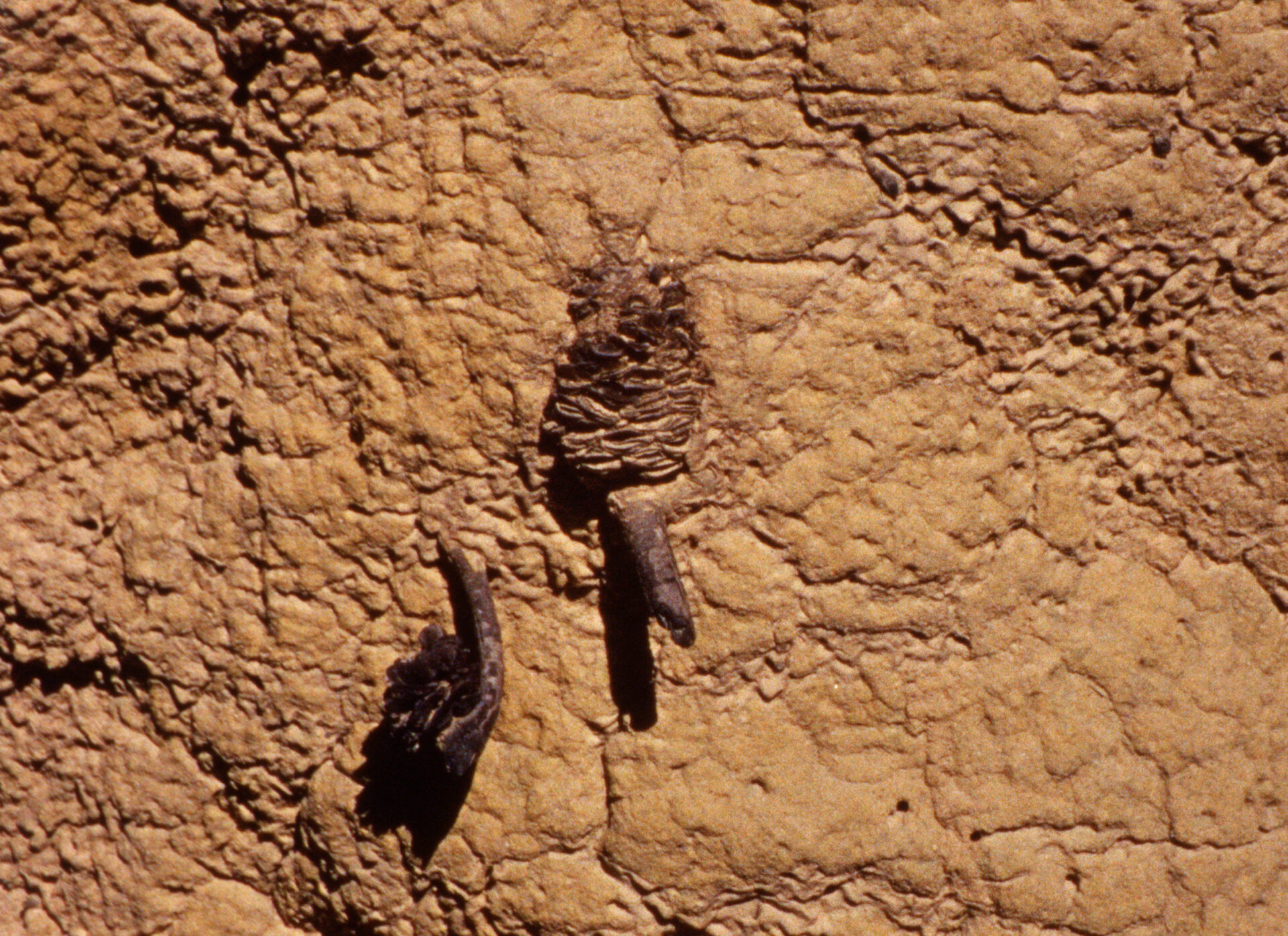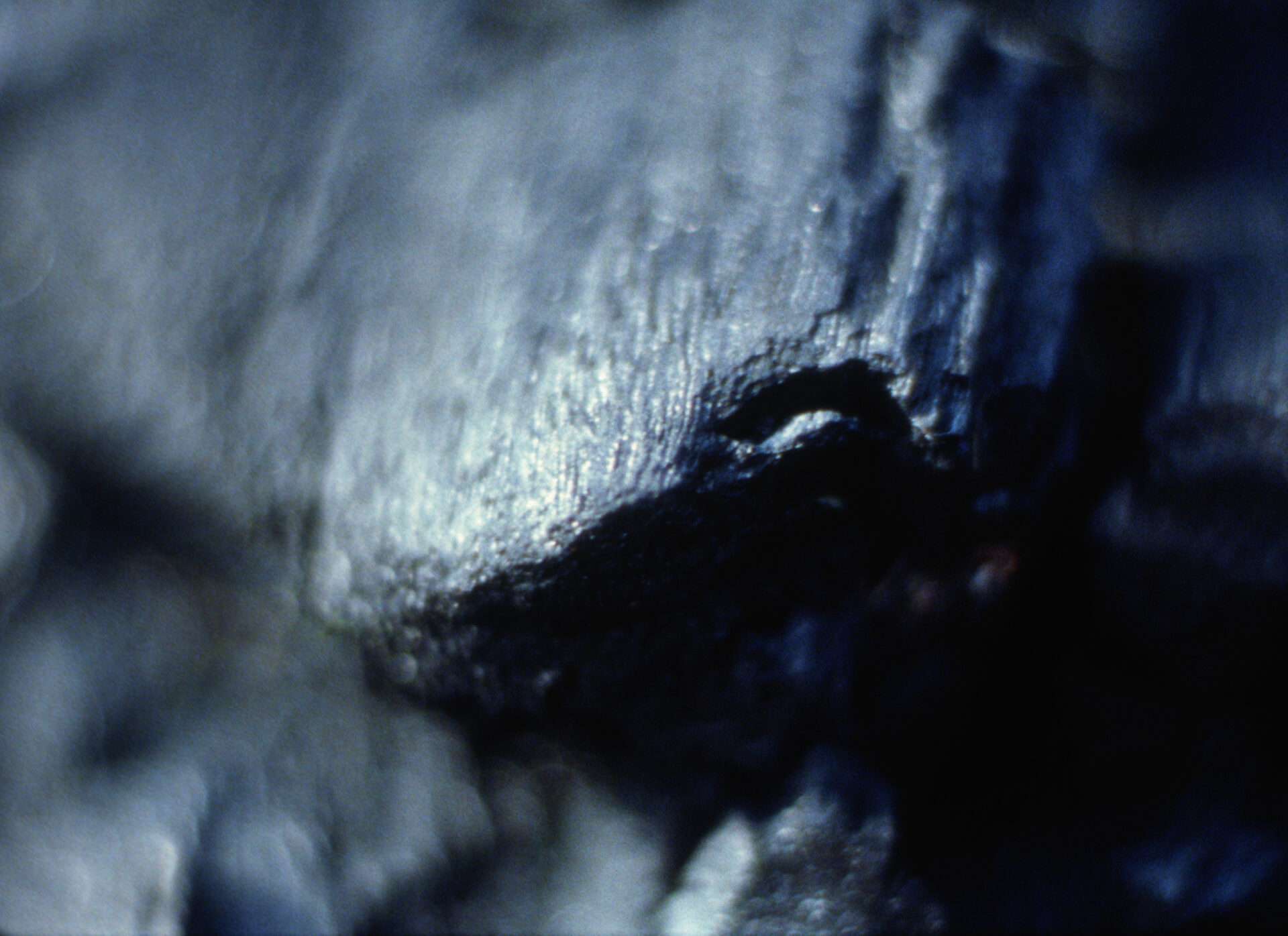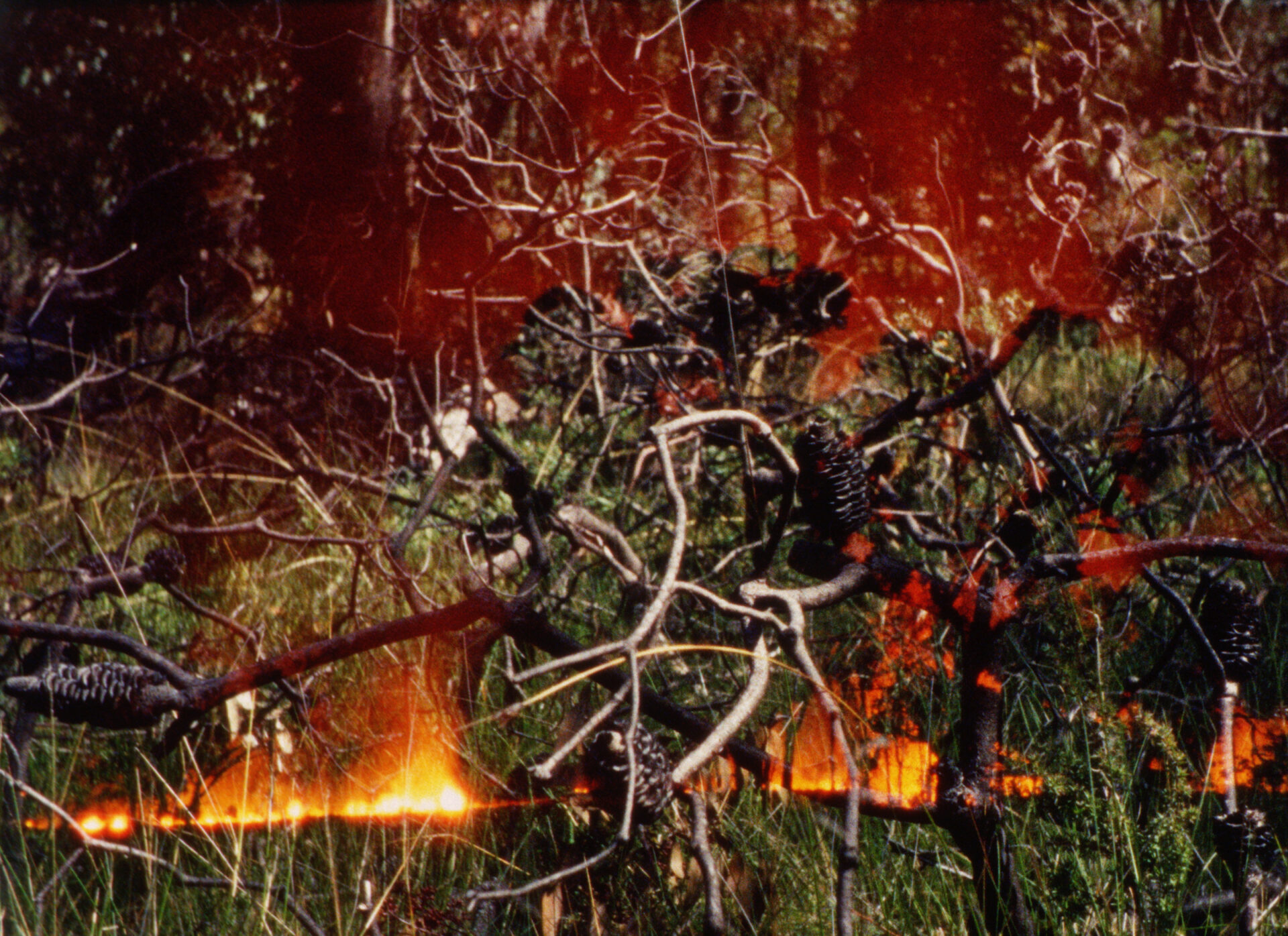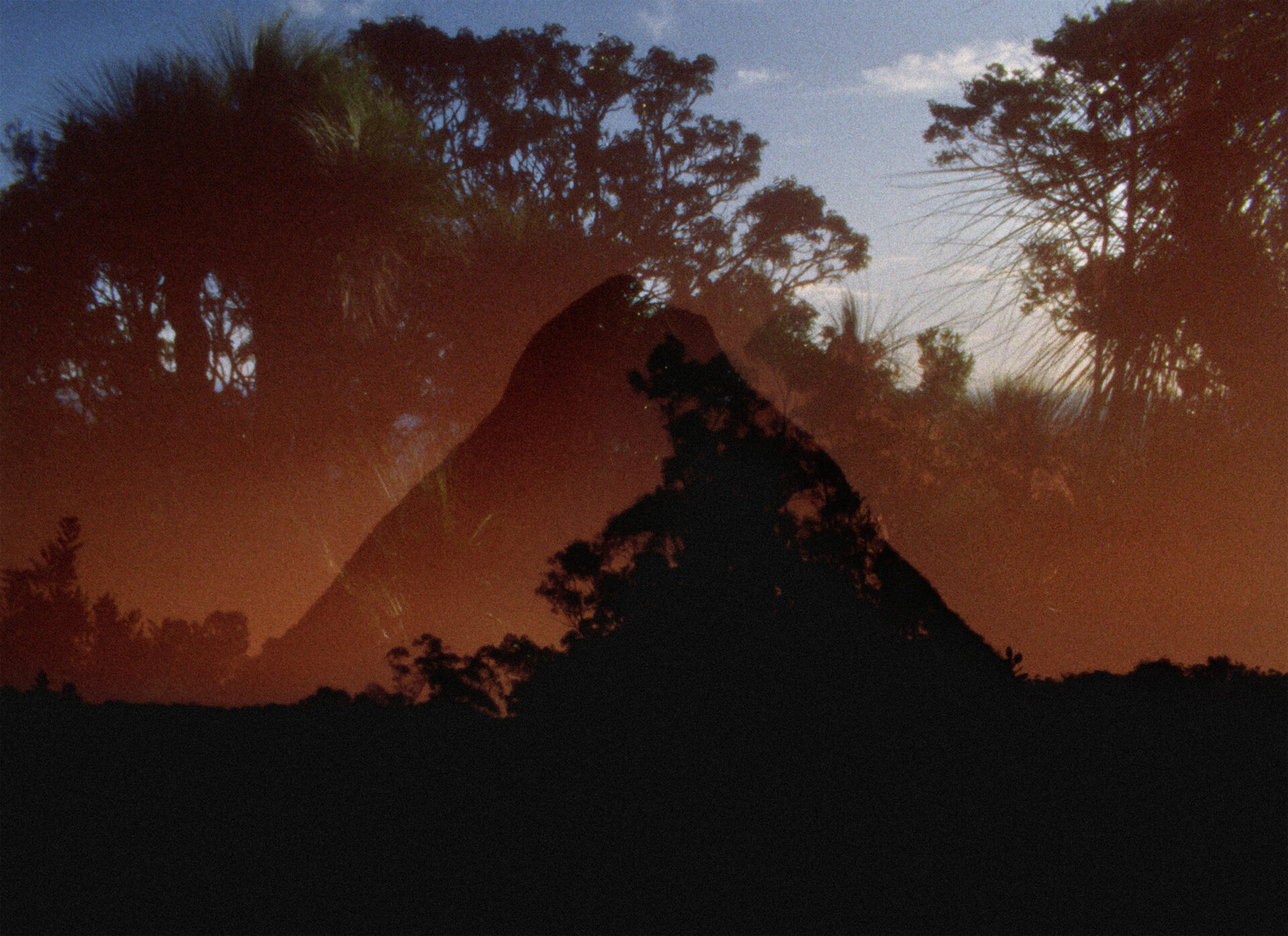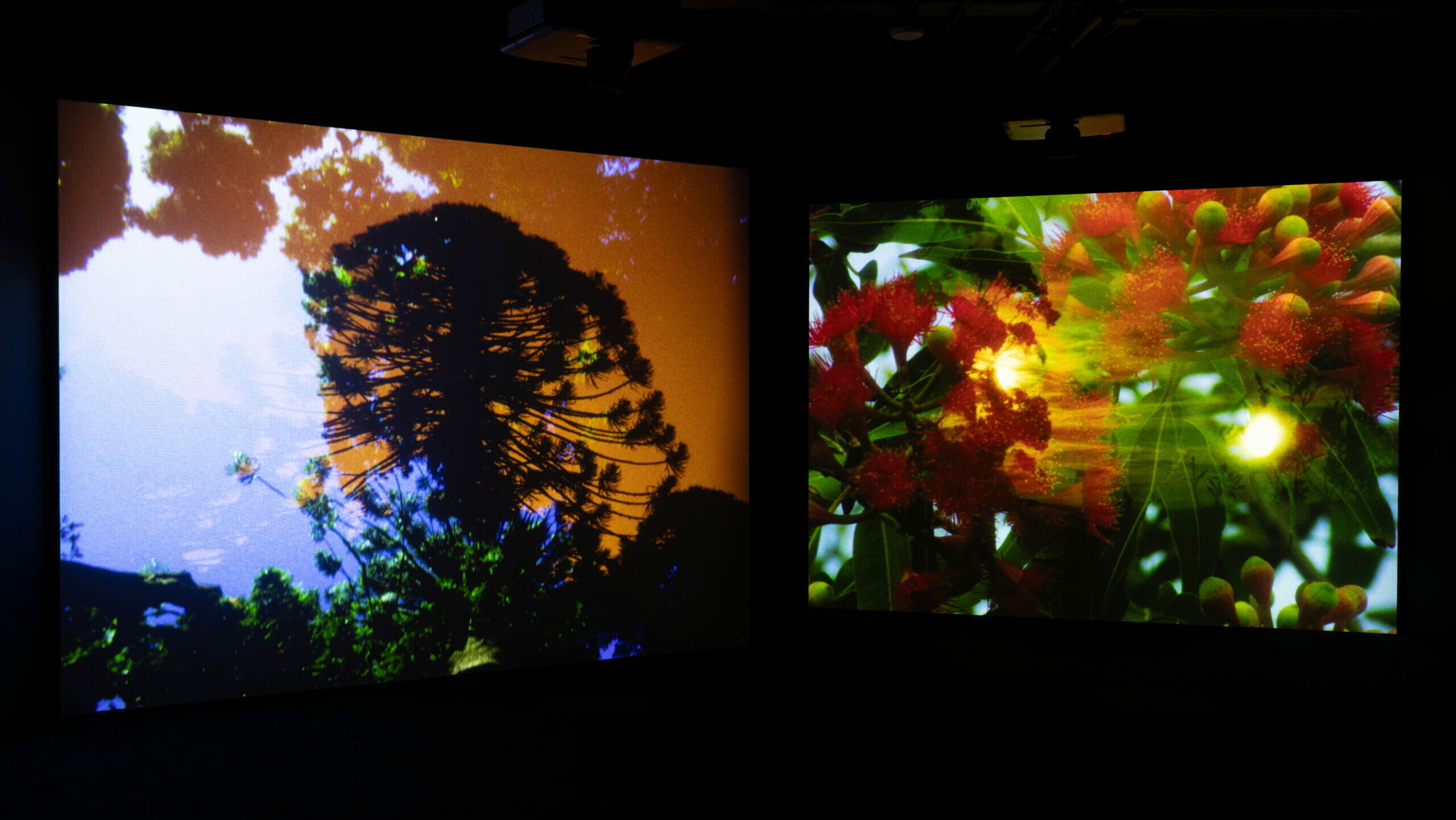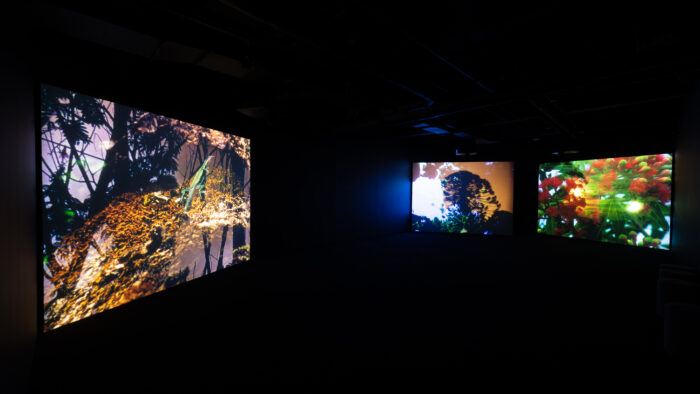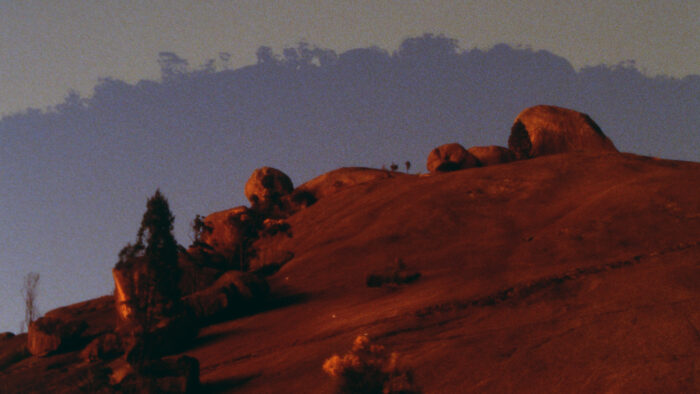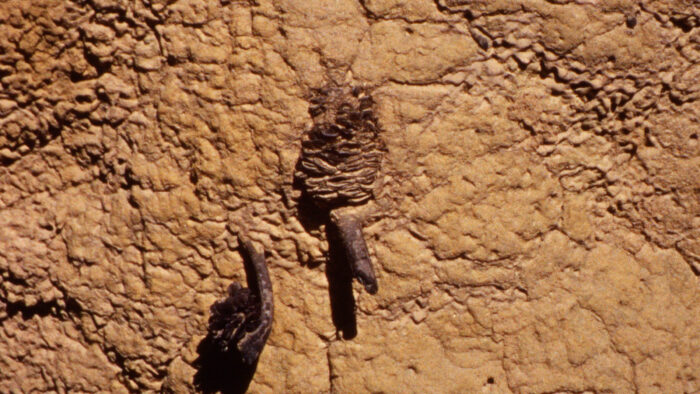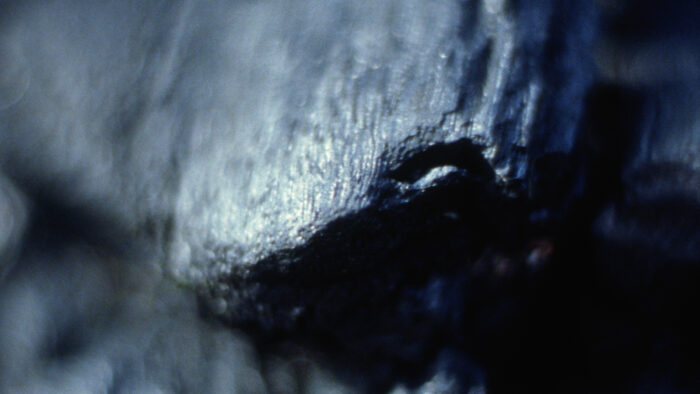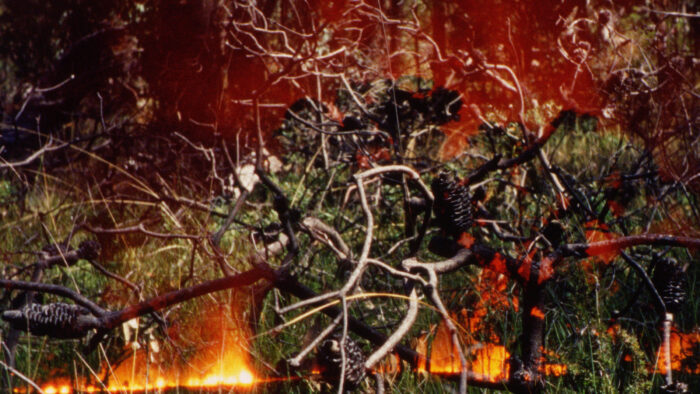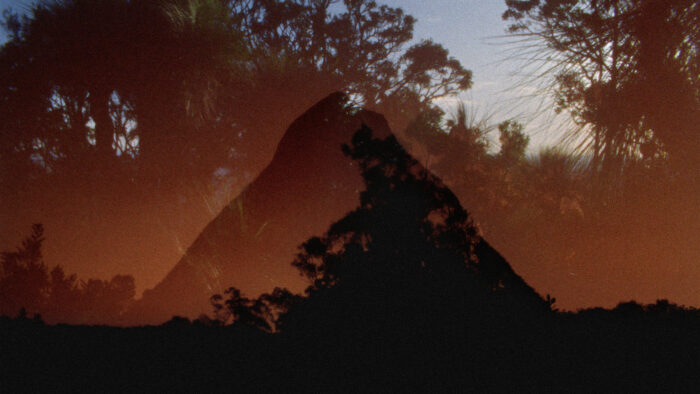Fulcrum Arts HQ
544 North Fair Oaks Avenue
Pasadena, CA 91103
Opening Reception
Saturday, May 17, 6–9 PM
Malena Szlam’s Archipelago of Earthen Bones traces cartographies of time rooted in the geologic formations of our planet. Examining volcanic lifespans to comprehend geology, this three-channel video and sound installation recognizes the divergent nature of the timescales around us. From split-second catastrophic ruptures to the slow-moving formation of mountains, Archipelago of Earthen Bones invites viewers to lean into time.
Using the Earth’s tectonic plates as imaginary maps, Szlam filmed a constellation of geological phenomena, including the afterglow of the Hunga Tonga-Hunga Ha’apai eruption, the eroded vestiges of volcanic activity in Australia’s Gondwana Rainforest, the topography of the central eastern mountain ranges in Australia, and lava fields where new flora shapes the terrain around of active volcanoes in the Chilean Andes. Szlam is joined by the Australian artist Lawrence English, whose accompanying soundscapes were composed using the Earth’s vibrations, murmurings, and signals.
Towards a Counter-Cartography of Volcanic Time
In 2022 and 2023, Szlam undertook fieldwork in northeastern Australia to explore the Gondwana Rainforest and the continent’s ancient volcanoes sites, tracing a path along the central eastern ranges and coastline, from Mount Wollumbin (Mount Warning) in New South Wales to Mount Beerwah and the Bunya Mountains in Queensland.
The eruption of the Hunga Tonga–Hunga Ha’apai, in December 2021, released a sonic boom that encapsulated the planet and blasted an enormous plume of water vapor and ash into the upper atmosphere, creating intensely colored twilight “afterglows,” that were visible from Australia to Antarctica. These vibrant sunsets and sunrises lasted for several months and were captured by Szlam on 16 mm color reversal film stock during the making of Archipelago of Earthen Bones.
Connecting antipodal cultures of tectonic plates in the Southern Hemisphere, Szlam also traveled to southern Chile to film new earth and forest formations at seemingly inert lava fields, thus linking geographical and geological extremes on the Ring of Fire.
Lawrence English developed a soundscape using microphonic imagination, vibrations from the underground, and biophonic sounds of birds and insects recorded originally from these sites. Each video channel of the installation has a unique sound environment designed to interweave with the others.
Curators, geoscientists, biologists, and knowledge keepers were the guiding force of this project including Gwynne Fulton, John Edmond, Clive Oppenheimer, Joali Paredes, Jorge Romero, Andrew Rozefelds, Francisca Vergara, BJ Murphy, Kyle Slabb, and Jarulah Slabb.
Acknowledgment of Country
We acknowledge the Traditional Owners of the unceded lands throughout Australia and recognize the continuing connection to lands, waters, skies, and communities. We extend our respect to Aboriginal and Torres Strait Islander cultures, and to the Elders past, present, and future.
This work was created across the lands of the Butchulla, Minjerribah, Quandamooka, Jinibara, Gubbi Gubbi, Turrbal, Yuggera, Wakka Wakka, Jarowair, Barrumgum, and Ngarabal Peoples, and the tribes of the Bundjalung and Githabul Nations. We acknowledge them as the Traditional Custodians and Knowledge Keepers of the land on which this project was filmed.
We acknowledge the Peoples of Wallmapu throughout the Southern Andes and recognize their cultural connection with the Ngen of volcanoes, forests, rivers, and mountains. We extend our respect to the Mapuche cultures and their traditional lands.
This work was created across the territories of the Mapuche, Pewenche, Wenteche, and Llaimache Peoples. We acknowledge them as the Traditional Custodians and Knowledge Keepers of the land on which this project was filmed.
About the Artist
Malena Szlam is an artist and filmmaker born and raised in Chile to Argentinian parents, and who now lives in Tiohtià:ke/Mooniyang/Montreal. Through her practice, Szlam reimagines connections between human beings and the natural world. Attentive to how geopolitics are intertwined with natural phenomena, her films, installations, and photographs explore embodied perception and the affective dimensions of analogue film processes. Her recent projects focus on geology, earth sciences, and volcanology. She has collaborated with composers and scientists— including Lawrence English, Clive Oppenheimer, and Susannah Buchan—to create soundscapes that emanate from the Earth’s crust, the ocean, and the atmosphere.
Szlam’s work has been exhibited at festivals and museums around the world, including Toronto International Film Festival, MoMA, New Directors/New Films Festival, Museum of Moving Image, Media City Film Festival, Cinéma du Réel, Edinburgh International Festival, International Film Festival Rotterdam, CPH:DOX, and Jeonju IFF. Szlam’s 2018 film ALTIPLANO was awarded 25 FPS’s Grand Prix, named the Melbourne International Film Festival’s Best Experimental Short Film, selected for Curtocircuíto’s Explora, and included in the Toronto International Film Festival’s Canada’s Top Ten.
Recent group exhibitions include Energy Fields: Vibrations of the Pacific, PST ART: Art & Science Collide (Los Angeles), femmes volcans forêts torrents, Musée d’art contemporain de Montréal; Time Machine, Palazzo del Governatore (Italy); Expanded Plus: Utopian Phantom, Factory of Contemporary Arts Palbok (South Korea); and The Moon: From Inner Worlds to Outer Space, Louisiana Museum of Modern Art (Denmark). Her work has been the focus of two retrospectives: Inexistent Time, presented by Los Angeles Filmforum, and Infra— at SBC Gallery of Contemporary art in Montreal. Other solo screenings include San Francisco Cinematheque, Cornell Cinema, and FICValdivia.
Writing about Szlam’s work has been featured on Artforum, Palgrave Handbook, Film Comment, e-flux, and other publications by writers, including Ela Bittencourt, Gwynne Fulton, Éline Grignard, Jessica Mulvogue, Ara Osterweil, Jasmine Pisapia, and Michael Sicinski.
Szlam’s work is included in the MoMA’s permanent collection.
Malena Szlam: Archipelago of Earthen Bones is made possible in part with support from the Perenchio Foundation. Additional in-kind support provided by Arup and GuestHaus Residency. The creation of this work was made possible thanks to the support of the Canada Council for the Arts and the Conseil des arts et des lettres du Québec.
